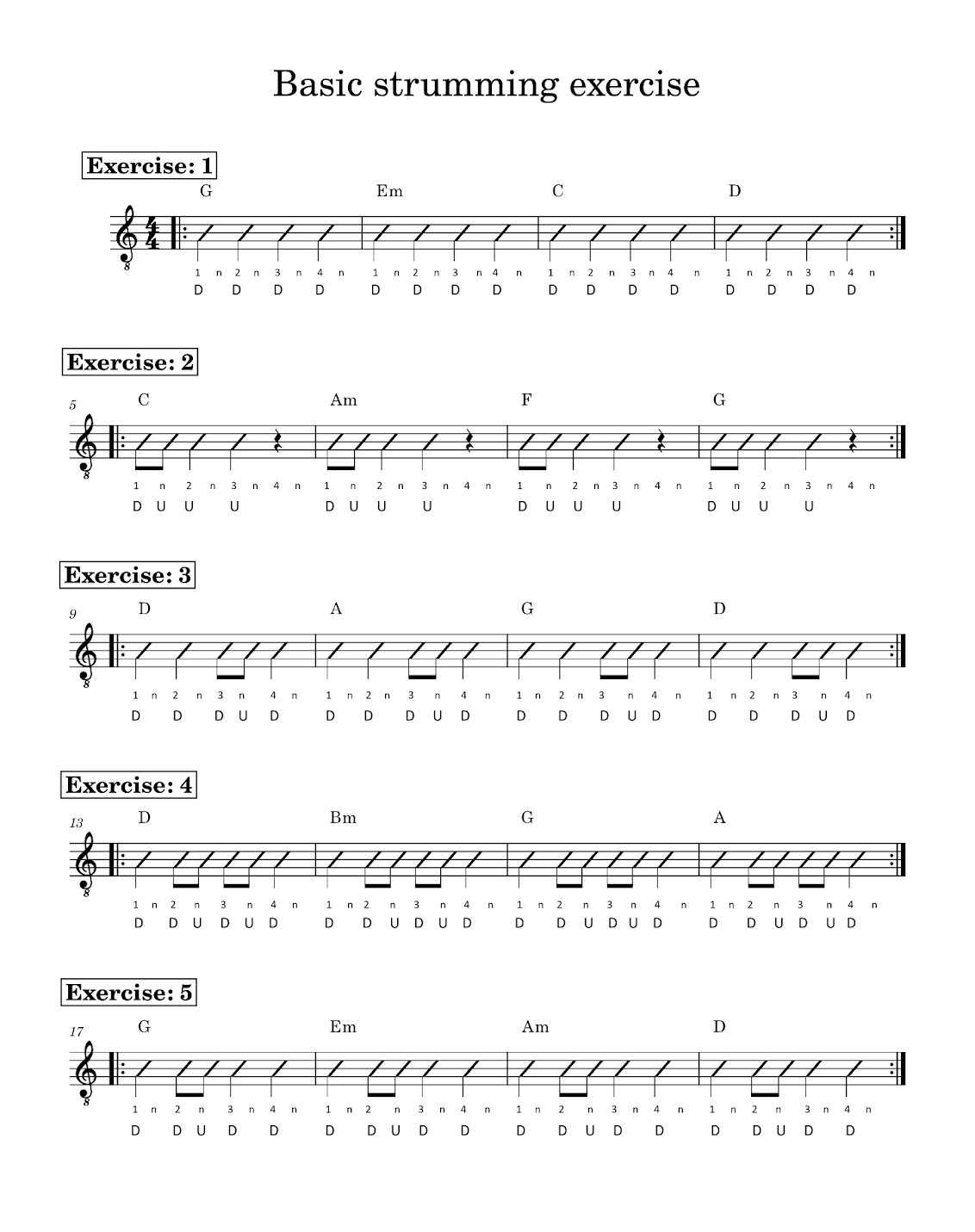
Table of Contents
Once you have built a basic grasp of the chords, the next big challenge is to strum the chords. The basic application of chords can be seen by combining different kinds of chords and strumming them one by one.
Thus to understand the basics of rhythm and to play the chord structure of a song it is very important to understand and perform the strumming properly.
In this blog, let's discuss five basic strumming patterns a beginner guitar student must learn to practice the chords.
1. Understanding the Basics
To understand the basics of strumming, the first thing a student has to understand is note theory. It is very important to know how to count on quarter and eighth notes.
It’s easier than it sounds.
Each quarter note beat gets a number. If there are four beats in the bar, you count up to four, like “1 2 3 4”. With 8th notes however we’re splitting each quarter note into two equal parts, like for every quarter beat “1 2 3 4”, we put one more beat in between, like “ 1 n 2 n 3 n 4 n”
There are two kinds of basic movement we consider while strumming i.e. downstrokes (D), when we move our strumming hand downwards, and upstrokes (U), when we move our strumming hand upward.
Considering this information, let us try the strumming patterns below.
2. Strumming Patterns
The above strumming pattern can be played on a single chord or on a combination of chords. It is advisable always to use a metronome while playing strumming exercises, start with a relatively low BPM and increase the speed gradually.
3. Exercises
The exercises below are based on the strumming patterns shown above. The strumming pattern is accompanied by a combination of chords, however, a student can strum over a single chord or on different chord combinations based on the student's convenience along with a comfortable BPM in metronome.

4. Bonus Tips
Here are some additional tips you can consider to strum more efficiently:
- Never stop moving your strumming hand
- Keep a loose wrist
- Do not hold the pick very tightly
Remember, learning to play the guitar takes time. But how much time depends on your practice and consistency. So, practice your strumming with these exercises to get ready to play your favourite songs in no time.
All the best.
-Turja Das Gupta
Guitar and Ukulele SME
Spardha School of Music
